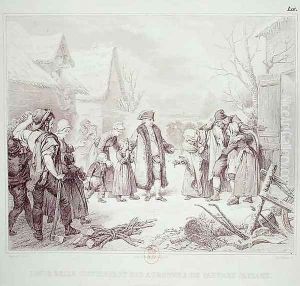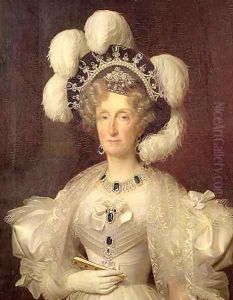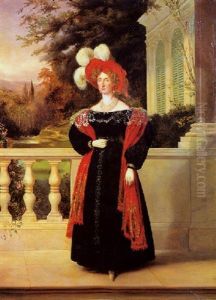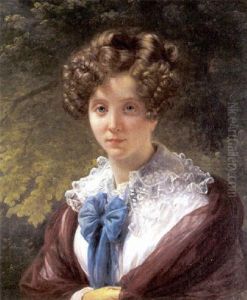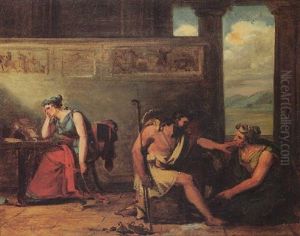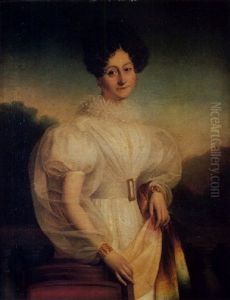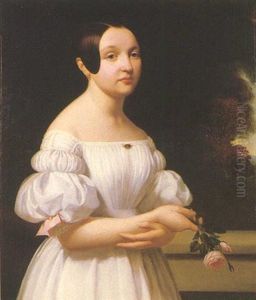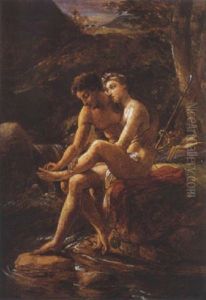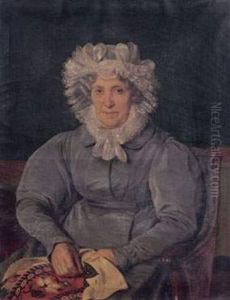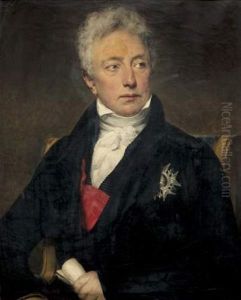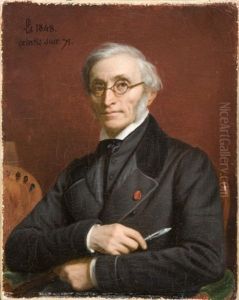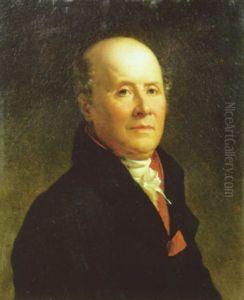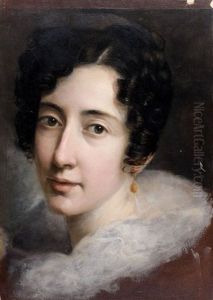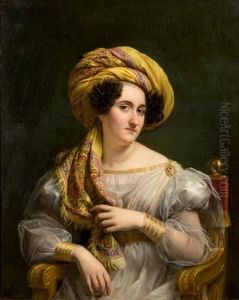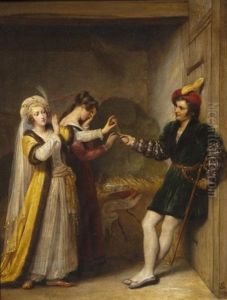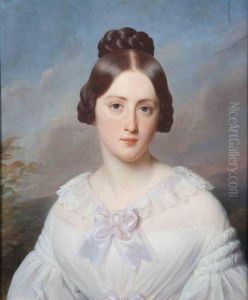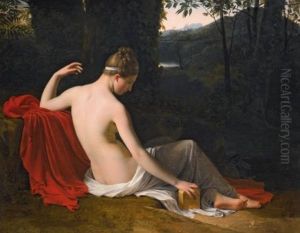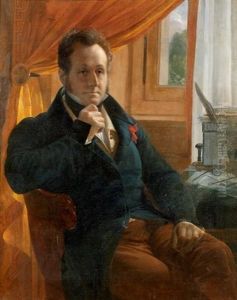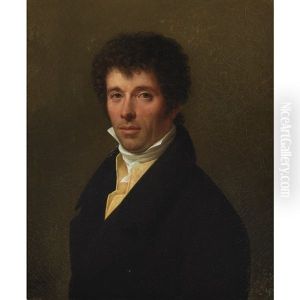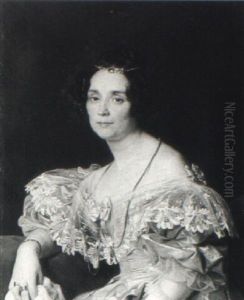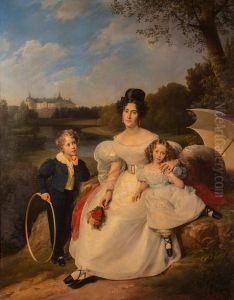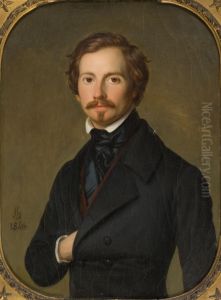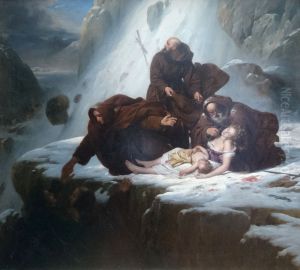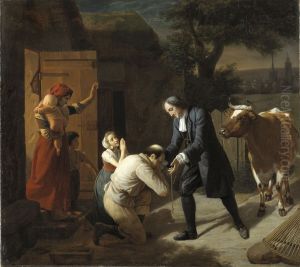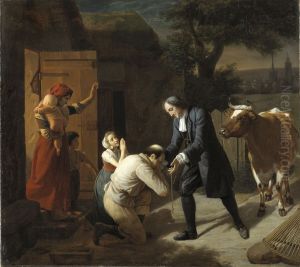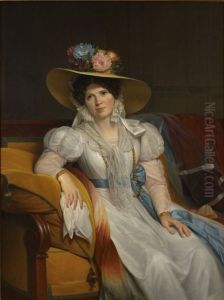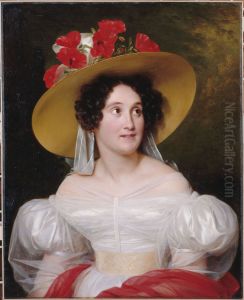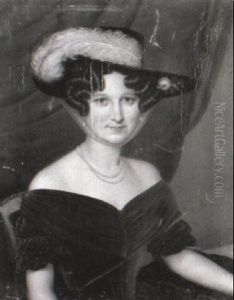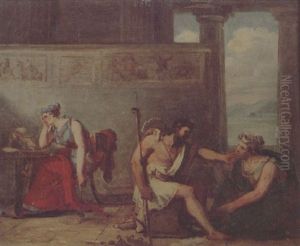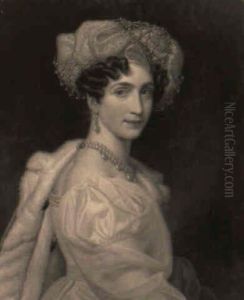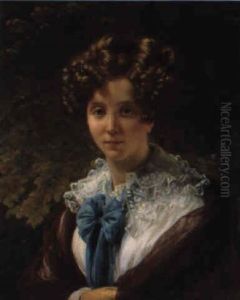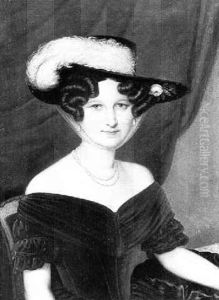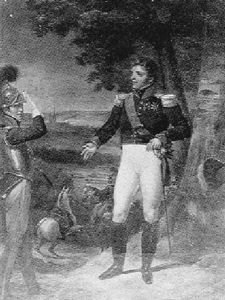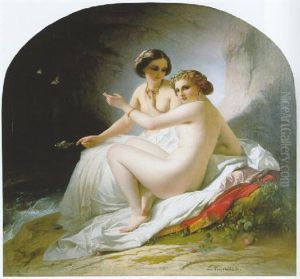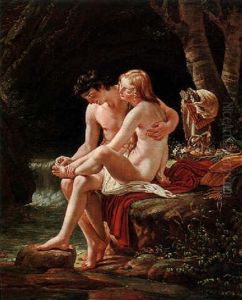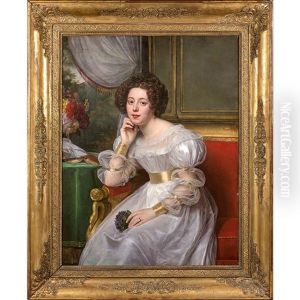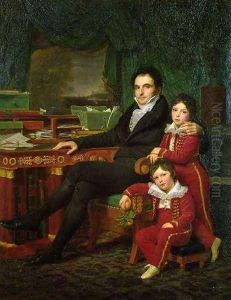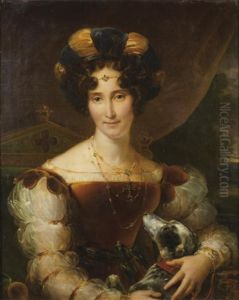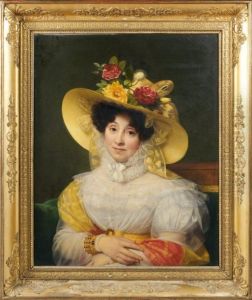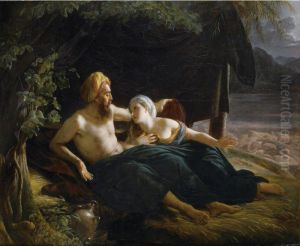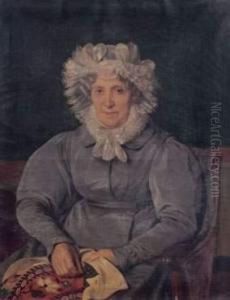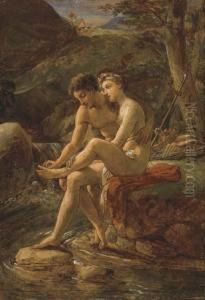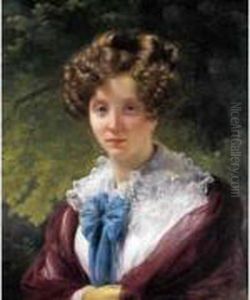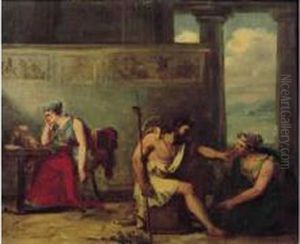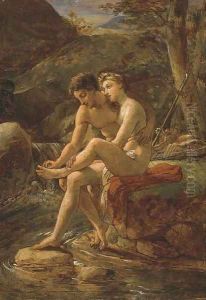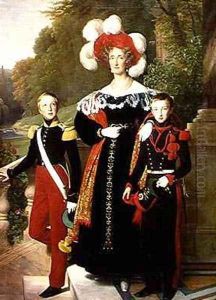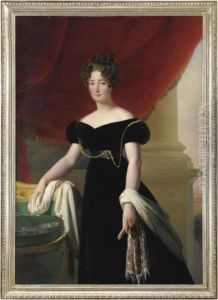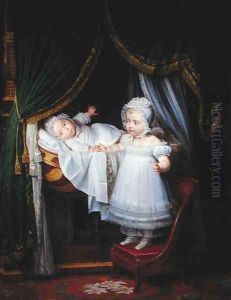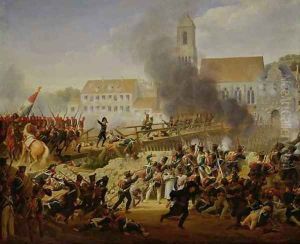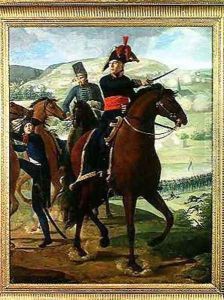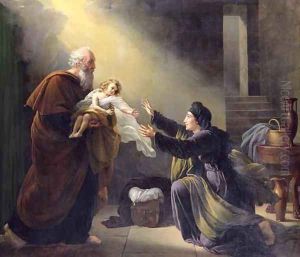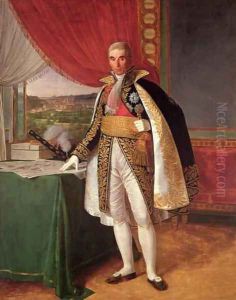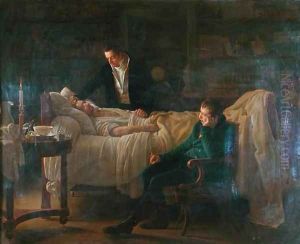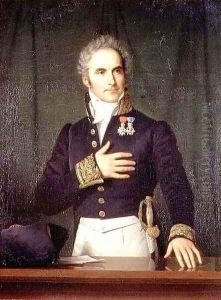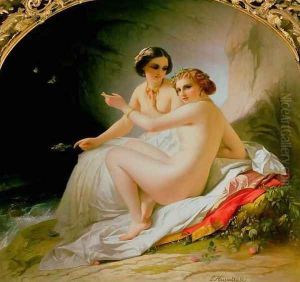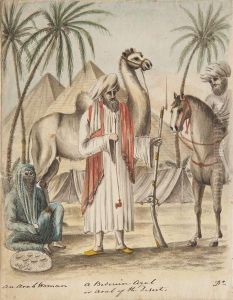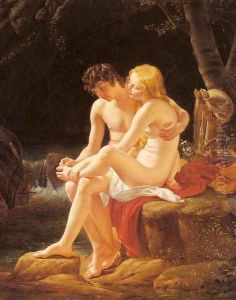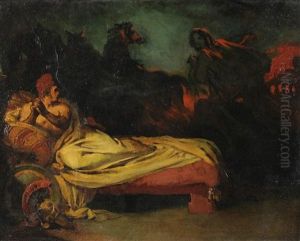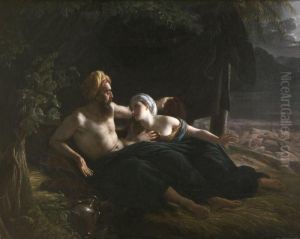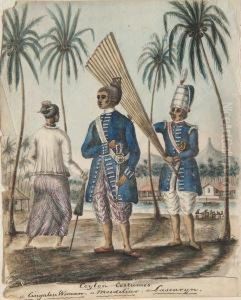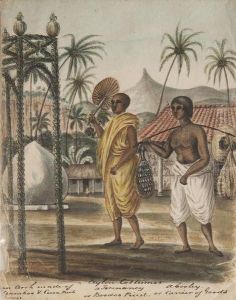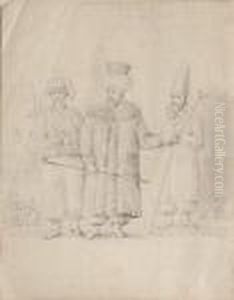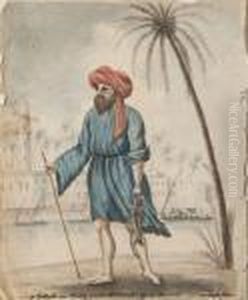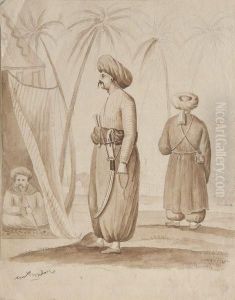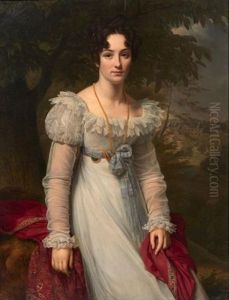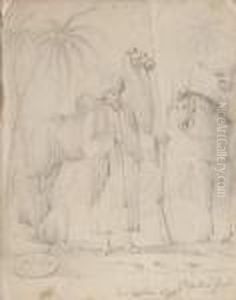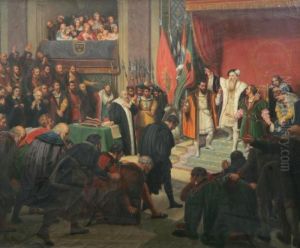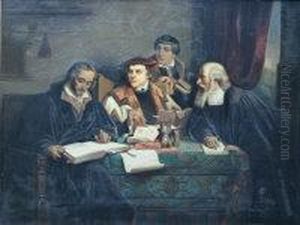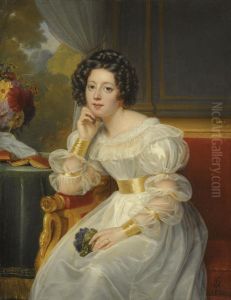Louis Hersent Paintings
Louis Hersent was a prominent French painter who was born on March 10, 1777, in Paris, France. Initially trained by his father, who was a wood engraver, Hersent later attended the Lycée Louis-le-Grand as a student. He began his formal artistic training under the tutelage of renowned painters such as Jean-Baptiste Regnault and Jacques-Louis David, who were leading figures in the neoclassical movement in French painting during that time.
Hersent's early works were historical and mythological in subject, adhering to the neoclassical style that was prevalent in the late 18th and early 19th centuries. However, as his career progressed, he began to move away from the strictures of neoclassicism and started to incorporate more romantic elements into his paintings, which was reflective of the shifts happening in the art world at that time.
In 1797, Hersent won the prestigious Prix de Rome, which allowed him to study in Rome at the French Academy. His time in Italy had a significant influence on his artistic development. After returning to France, he became a respected member of the Paris Salon, the official art exhibition of the Académie des Beaux-Arts in Paris. He exhibited his works there regularly and received numerous awards for his paintings.
Louis Hersent's reputation as a painter was firmly established by the 1820s. He became known for his portraits and historical paintings, two genres in which he excelled. Among his notable works are 'Daphnis and Chloe', 'Ruth in the Field of Boaz', and portraits of many distinguished individuals of his time, including the Duchess of Angoulême.
In 1825, Hersent was made a Knight of the Legion of Honour, a testament to his significant contributions to French art. He later became a teacher at the École des Beaux-Arts in Paris, where he influenced a new generation of artists. One of his most famous students was Eugène Delacroix, a leading figure in the Romantic art movement.
Throughout his life, Hersent remained actively involved in the Parisian art scene. He died on October 2, 1860, in Paris, leaving behind a legacy of work that captures the transition from the neoclassical to the romantic style in French painting.
